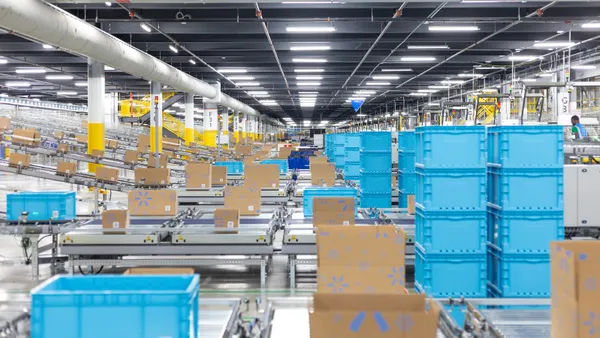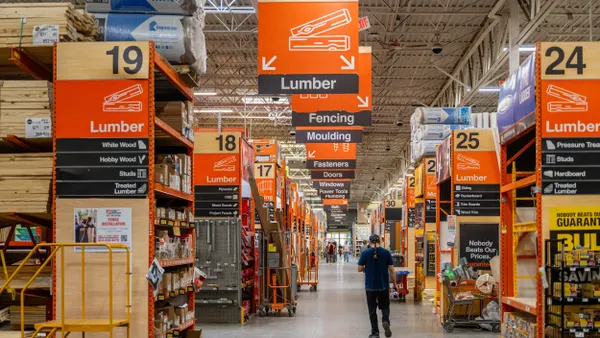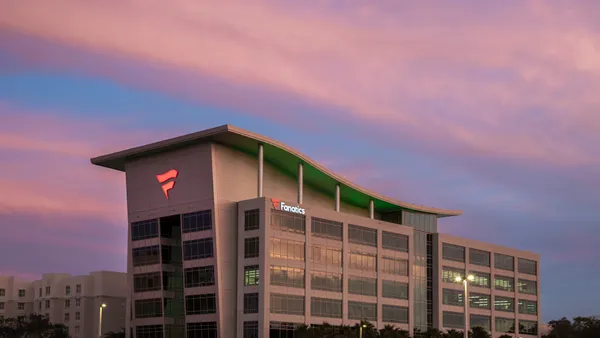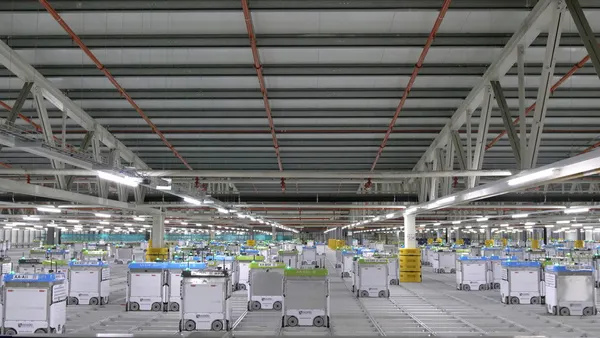Dive Brief:
- Wayfair dramatically reversed its trend of quarterly losses in the hundreds of millions in the second quarter when pandemic-driven online home spending ratcheted up the company's immense and admittedly underutilized logistics network, reported executives Wednesday. The company posted $274 million in net income in Q2 after losing $286 million in Q1 and nearly $1 billion 2019.
- The e-tailer reported an 83% year-over-year increase in net revenue in Q2 while doubling the wholesale dollars running through its CastleGate middle-mile network.
- CEO Niraj Shah called it a "turning point" in the company's profitability and touted the "wisdom" of the company's strategic investments in logistics.

Dive Insight:
Wayfair executives have been saying that 2020 is the year their investments in a global logistics network will pay off. After years of capacity building, the company has 16 million square feet of warehouse space on multiple continents in an effort to take control of its supply chain, attract suppliers with more collaboration and proactively manage cost and customer experience for the last mile.
By this time last year, executives said the building phase was largely over and the task was now to increase throughput and asset utilization. The pandemic proved them right — at least for now.
"Even while absorbing extra expense to upgrade the safety standards of our logistics operations in light of [COVID-19]. We saw gains in fulfillment labor efficiency within CastleGate. Drops per route increased within [the Wayfair Delivery Network] and optimized routing yielded savings, even when drop-shipping products," said CFO Michael Fleisher.
Co-founder Steve Conine said Wayfair's data-driven approach to demand planning at the SKU level and a shift to biweekly forecasting put hesitant suppliers at ease to continue production despite the fluctuating pandemic environment.
But, as the world slowly reopens for business, Wayfair's order volume is already showing some signs of moderation, Shah said, insisting that underlying efficiencies will remain.
The CEO said he expects positive adjusted EBITDA margins to persist going forward (as long as net revenue growth exceeds 20%) since this pandemic has facilitated a shift in consumer behavior toward online shopping, but also in the depth of Wayfair's supplier relationships and their increased use of CastleGate. It all leads to greater network utilization, he said. The company is employing racking and automation to increase warehouse capacity without additional hiring.













